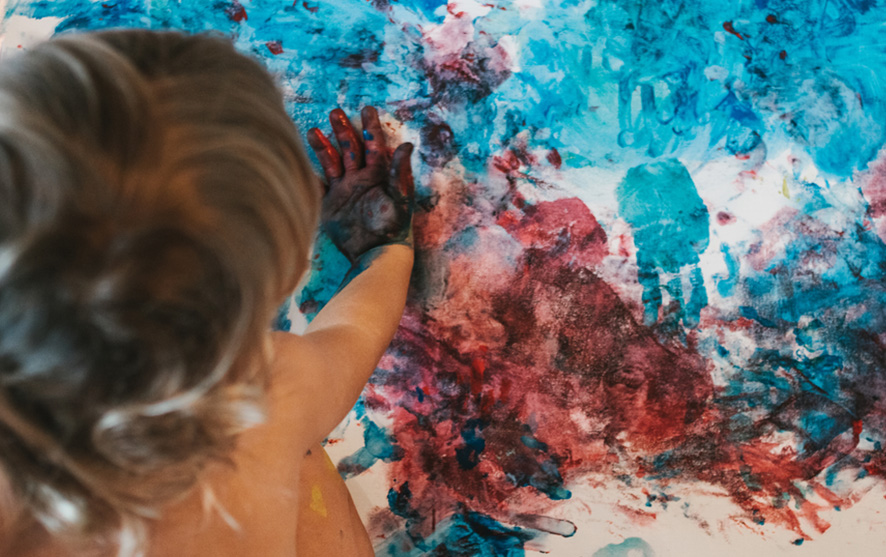Tidying up the garden grass
What you need Child-friendly scissors Some outdoor space - garden, park or grassy area Benefits [...]
Read more


Learning the connection between movement and the marks they leave is a vital part of the process of learning to write, and can begin from a very young age. This experience will develop both gross and fine motor skills.
Select the items you would like to use. If your child is old enough, you can walk around the house with them and help choose together.
Prepare the paints in an area where you can explore and get messy. This is ideally done on large paper taped/secured to the floor/ground in an area that can be easily cleaned up after. Your child can explore sitting, kneeling or squatting. If you have an outdoor space, you could set up this activity outside.
Allow your child to work at their own pace, changing the utensils throughout the activity. It is also nice to ask your child what they are using and explain (if needed) what the purpose of it is. Explore the different prints and marks they make. Model to your child how to create different prints using each utensil that they may like to imitate themselves.
You will end up with a messy work of art, but this is a fantastic way to get your child interested in making marks, and also develops the arm, shoulder and hand muscles they will need for mark-making and writing as they grow older.